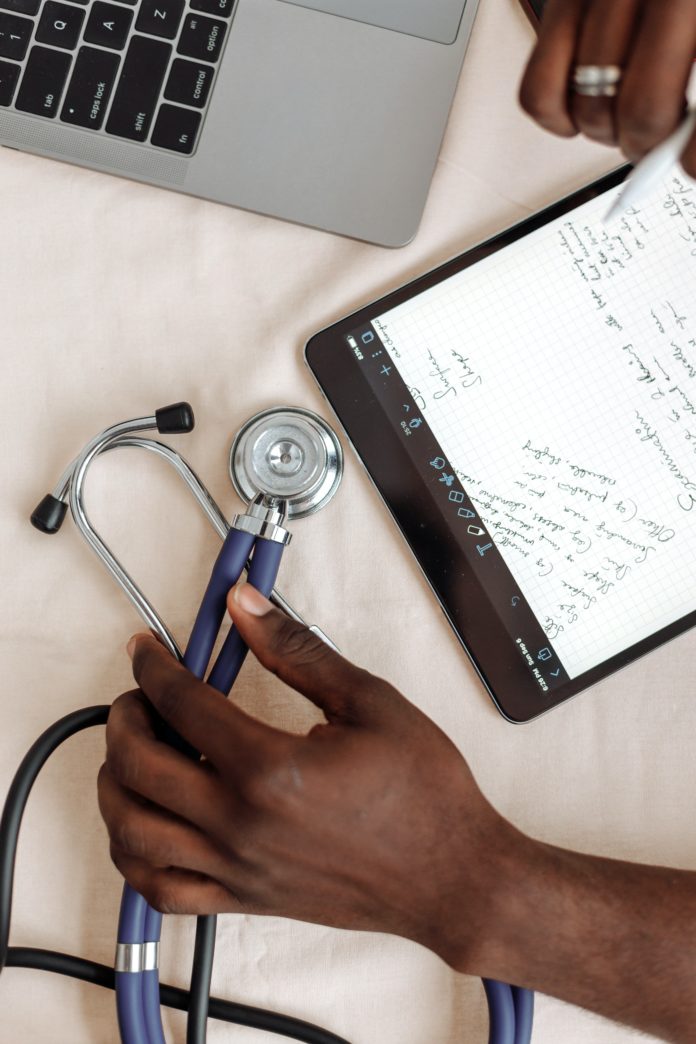Cross Street Medical Clinic was established in 2018 when its Founder, Dr Reginald Tang realised that there was a need for more clinics offering STD screening in Singapore. While they offer many specialised services, they also were affected by the pandemic in similar ways to other clinics and businesses: the change in their patients behaviour and needs, as well as stringent safe distancing measures established to safeguard public health.
In managing its operations both before and during the pandemic, Cross Street Medical Clinic has been supported by local healthcare app Ouch, which helps them with processes such as staff onboarding, process efficiency, and digitisation. SMEhorizon speaks with Cross Street Medical Clinic’s Dr Reginald Tang, on his experience digitalising his practice’s operations, and his clinic’s journey through the Pandemic. Anil Kumar, Co-Founder of Ouch Inc. also shares on the general trends in the health industry, and how technology vendors and healthcare practitioners can collaborate to bring the best to the public.
The irreplaceable human touch in healthcare
In our current climate, there appears to be potential for healthcare services to thrive. Anil shares that there are several trends in the healthcare industry that may indicate mindset changes. “We saw an acute rise in awareness on general well being largely due to the pandemic experienced globally,” he says. “As COVID rules and regulations eases and more international borders are starting to reopen, we should see a strong rebound in medical tourist into Singapore. He also points out the increased interest in technology such as health tech wearables and remote diagnosis services.
Yet for all this, many of the challenges faced on the ground by healthcare providers centre around the face-to-face encounter, and the human relationships it involves. For example, when recalling the challenges faced in the early days of clinic, Dr Tang recalls that “getting suitable staff is critical. There is no shortcut for building a base of patients. It takes time and personal effort to impress patients that they should come back to you,” he shares.
The importance of human interaction in healthcare was also observed by Anil, who points out many of the issues managing patients seeing doctors in person, despite the constraints imposed. “The emergence of COVID has forced the authorities to put in place strict measures to protect both the healthcare workers and the general public,” he recalls.
“At the height of the pandemic, only 5 patients were allowed physically waiting in the clinic as part of the safe measurement measures. Many end up loitering outside the clinic, waiting to get in line to be next to be allowed into the door.
“Frustration rose amongst patients to wait (a long time) standing to get a queue before being seen by the doctor, let alone the pain and agony associated with the illness. This was equally vexing for clinic assistants as they need to manage the queue (i.e. walk-in & call-in), abide by the SMM rule while (concurrently) multi-task duties such as registration, dispensing medicine, keying invoices, assisting doctors, and so on.
“In most cases clinic assistants get inundated with all the extra duties and things get exacerbated whenever there is staff shortage, and they end up prioritizing tasks over “trivial” matters,” he concludes.
Digitalisation easing the pains
While it seems clear from the examples that digitalisation and communication technology cannot replace everything that a patient expects from their encounter with a doctor, There are aspects in which technology can help. Dr Tang recalls being shown his first demonstration of the Ouch app his clinic now uses: “the design concepts are very customer focused as it leverages on technology, to take care of the main concerns of patients, such as simplifying getting a medical appointment and clinic waiting time. These are key pain points for many patients.”
Besides taking into account the particular needs of patients, whose visits are often “unplanned and urgent”, Dr Tang also appreciated how the solution streamlined many processes such as Appointment Registration, Payment and Outreach, while being user friendly for his clinic’s assistants who are not especially tech savvy.
All in all, digitalising his processes with a suitable solution helped Cross Street Medical Clinic tackle the onset of the pandemic “I am glad I started using Ouch before the outbreak of COVID-19,” shares Dr Tang.
“Ouch’s streamlined workflow really helps a lot during this pandemic since we could schedule and anticipate when patients are coming and thereby minimize overcrowding of the waiting area. This really helped us comply with COVID-19 social distancing guidelines set by MOH.”
Dr Tang shares that while the clinic assistants took to the system fairly quickly, the patients got on board more gradually “as many of them were very used to coming down to wait for a queue number.
“However, things changed quickly when safe management measures (SMM) started and people could not enter clinics freely.”
Bringing better care to patients
Anil understands that many practices, especially smaller ones, may have limited resources when it comes to both providing a high level of care, while also managing operations and processes. “We believe doctors should spend more time and focus building customer affinity and improving total health experience and leave the IT system to professionals,” he says.
“Our aim is to digitally transform clinics offering SaaS for both the front and back end system. There are numerous advantages to adopting SaaS as opposed to traditional customary business software/hardware installation models, including cost-effectiveness, swift configuration and deployment, effortless updates, better accessibility, and scalability.”
Dr Tang agrees, asserting that “Anything that can simplify our workflow in a clinic will make our work life better.”














